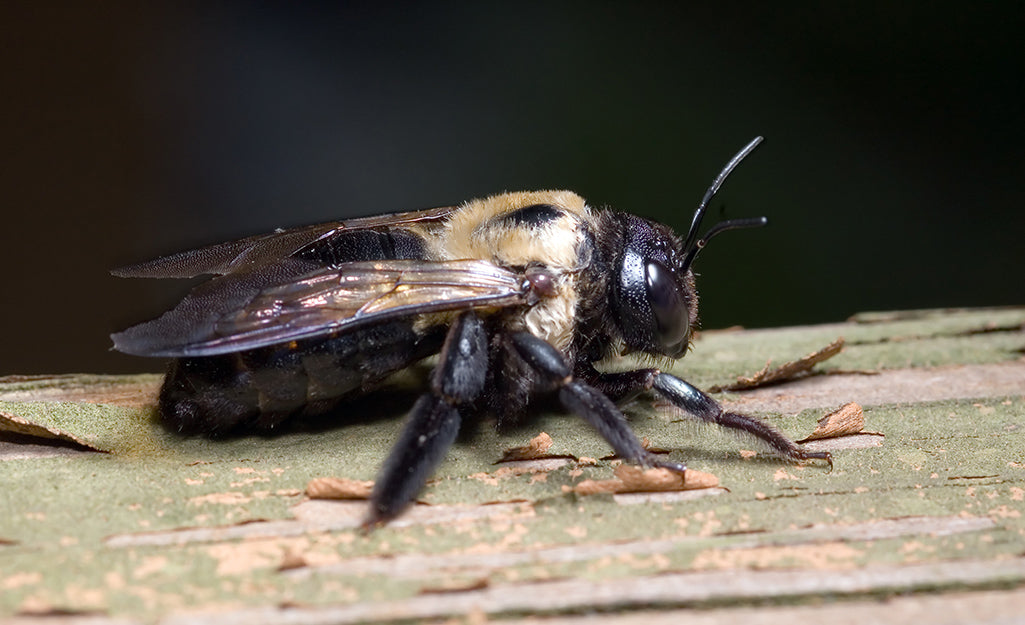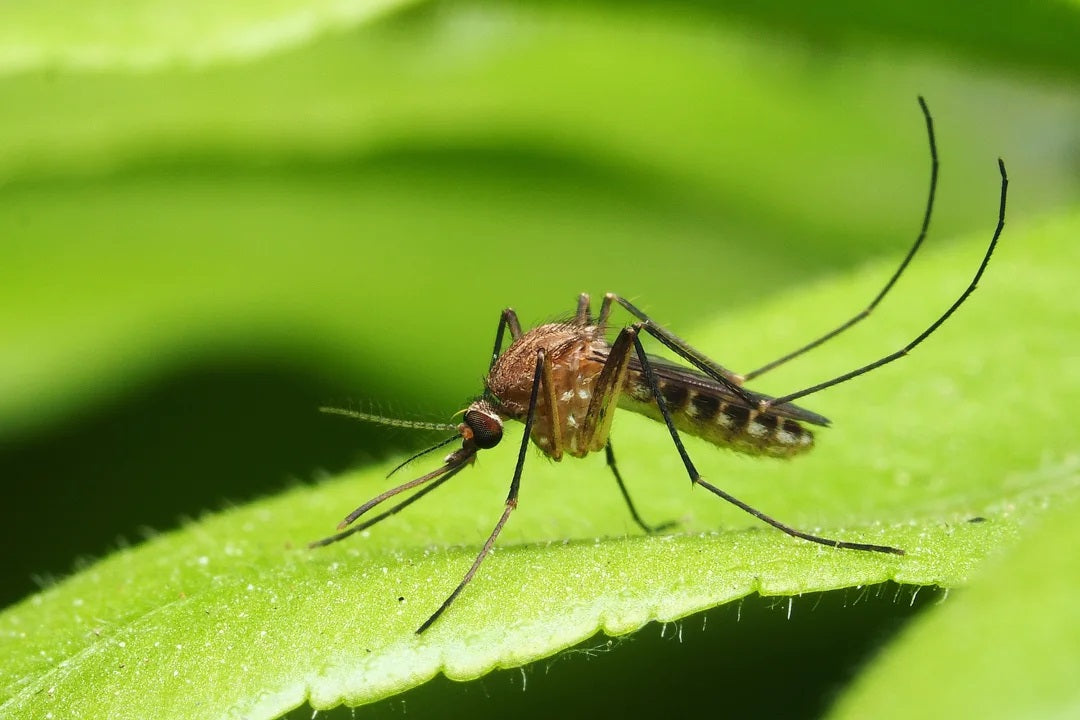When it comes to carpenter bee nesting habits, the search for a suitable place to build a home can sometimes be reminiscent of “Goldilocks and the Three Bears”: there’s great, there’s good, and then there’s “I guess this will do for now.”
Carpenter bees are selective when it comes to the type of wood they use for building their nests. These wood-boring creatures generally prefer the soft, easy-to-drill varieties like mulberry, ash, cedar, cypress and pine1. (That is why our Best Bee Trap is made of soft pine!) The denser and harder the wood, the more strenuous it is for a carpenter bee’s mandibles to have to chomp through the grain. Carpenter bees aren’t exactly lazy…they just don’t want to work harder if they don’t have to.
For homeowners, this becomes especially important when taking into account the type of wood used on the siding, roof or deck of the home. Not only do carpenter bees prefer softer varieties of wood, they’re also biased toward untreated, unpainted surfaces – a log cabin with untreated cedar siding is a veritable carpenter bee dream! If possible, external surfaces of the home should be constructed of hardwood to discourage carpenter bee nesting2.
Not sure if carpenter bees are the culprit? Read our Carpenter Bee Infestation Removal blog for more information.

Does Treated Wood Prevent Carpenter Bees?
The short answer here is no. A quick coat of varnish or stain isn’t always enough to ensure that your home is protected against these determined little excavators. While choosing to paint or stain the wood around your home can definitely deter some, a desperate and industrious carpenter bee won’t hesitate to build a nest there, even if they have to dig through a few thin layers of coating. Many homeowners find themselves still having to set traps, plug holes and spray nests even after treating their wooden surfaces with oil- or polyurethane-based finishes. But what about engineered wood, or materials like composite decking?
Pro Tip: When using our Carpenter Bee Traps, we recommend you keep the wood untreated.
Does Composite Wood Prevent Carpenter Bees?
Since the 1990s there has been a gradually increasing trend in the use of composite wood decking. However, wood-plastic composite was actually invented in 1960 by two Milanese brothers named Dino and Marco Terragni3. Some sixty years later, the composite wood materials of today are made up of a variety of ground wood particles and heated thermoplastic resin, which is then molded into the shape of decking boards. So what has this got to do with carpenter bees?

Due to the high concentration of plastic inherent in composite wood materials, the individual boards are not only denser than traditional wood, they are more resistant to weathering and invasive insect species (e.g., carpenter bees and termites). There has been some debate as to whether composite wood materials eliminate the problem of carpenter bees altogether. However, it is safe to assume that given the choice between traditional and composite wood, the average carpenter bee will go all-natural, every time. If you live in an area that is prone to large numbers of carpenter bees, composite wood may be a good alternative to, say, pressure-treated pine.
Do Carpenter Bees Kill Trees?
On the whole, when it comes to trees, carpenter bee damage is generally more cosmetic than it is structural. Because the species is solitary in nature, it would likely take many generations of carpenter bees to inflict the kind of damage that a single colony of termites can achieve in a quarter of the time. Don’t get us wrong, carpenter bees are definitely a nuisance – just not the life-or-death kind.
When it comes to the natural environment, carpenter bees are no more likely to kill a tree than a woodpecker is. That being said, carpenter bees love trees that are already dead or decaying because – you guessed it – the wood is soft and pliable. That kind of material makes the perfect home, allowing generation after generation of carpenter bees to prosper.
One preventive measure to discourage carpenter bees that might nest in a nearby tree and annoy you is to inspect the property for dead or decaying wood (especially any of the softer varieties mentioned above). When possible, remove it so as to reduce the number of suitable nesting places.
Need to repair damage that has already been done? Check out our blog post How to Repair Carpenter Bee Damage for some DIY tips!
- Michael F. Potter, “ENTFACT-611: Carpenter Bees,” Entomology, University of Kentucky, September 8, 2018, https://entomology.ca.uky.edu/ef611.
- “Carpenter Bees,” UC IPM Online, University of California Agriculture and Natural Resources, June 2014, http://ipm.ucanr.edu/PMG/PESTNOTES/pn7417.html.
- “The History of Composite Decking,” Composite Prime, October 22, 2021, https://www.composite-prime.com/composite-decking-guide/the-history-of-composite-decking/.









Leave a comment
All comments are moderated before being published.
This site is protected by hCaptcha and the hCaptcha Privacy Policy and Terms of Service apply.